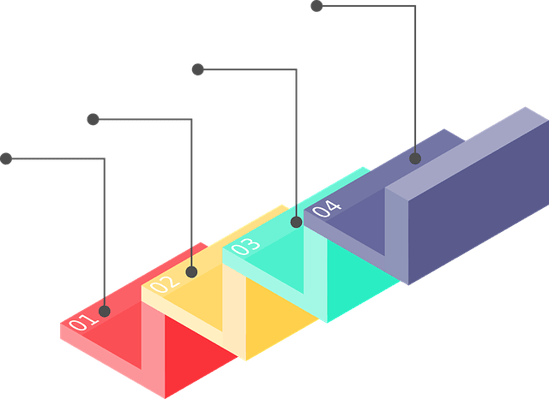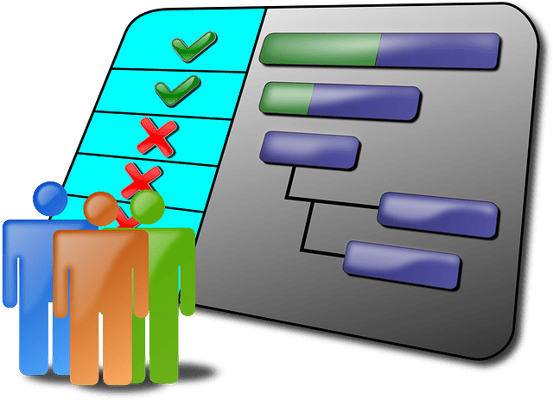Capabilities articulate the competencies of your company. When compared to other business attributes such as functions or roles, capabilities are more stable. It’s possible to add, change, or remove capabilities, but that doesn’t happen often.
When capabilities do change, it’s usually because of a catalyst. This might be a shift in strategy or an external factor that causes a new need to emerge. Because of this, capabilities can be mapped to goals and objectives.
Business capabilities also tend to be far-reaching. A single capability might impact multiple processes and functional areas. Because of this, it can be difficult to understand how capabilities benefit or detract from processes. This is where a business capability model can help.
What Is a Business Capability Model?
A business capability model is a visual that allows you to see your organization from the perspective of its capabilities, or what it can do. In the hierarchy of a capability model, there’s usually a broad “high-level” capability followed by lower capabilities.
The highest capabilities are also called level zero capabilities. You can divide these into two categories: customer-facing and back-office. Additionally, you can connect them to different business functions, such as managing or enabling.
Business capabilities can also be associated with the value chain, which includes:
- Sales
- Service
- Logistics
- Operations
Lower-level capabilities are usually more specific. There will also be more of them.
A business capability model can be exceptionally simple. For example, it might just show level zero capabilities with lower-level capabilities listed beneath them.
However, it’s common for businesses to create and use capability models that are much more complex. These models may also include other information about the organization and current environment that may be relevant to the enterprise architect.

Example of Business Capabilities
What does a business capability look like starting from level zero and working down into granular details? Here’s an example:
Level Zero: Business Administration and Support
This is a very broad capability. Essentially, it describes the organization’s ability to complete tasks relating to support and administration.
Level One: Management of Human Resources
This is a lower-level subset of the level zero capability. It describes the ability to manage human resources to achieve desired business outcomes. HR management would be just one example of a level one capability.
In a capability model, this level might also include financial management, information management, or sales and marketing.
Level Two: Recruitment and Hiring
There are often multiple capabilities defined in this subset. For example, in addition to recruiting and hiring, other HR capabilities might include:
- Training and development
- HR strategy development
- Compensation and benefits administration
All of this can be detailed in a capability model using the right tools. It’s also possible to drill down into the lower-level capabilities to extract additional details. Training and development might be broken down into information sourcing, curriculum development, and knowledge base creation.
Uses for Business Capability Models
Business capability models are frequently used for short- to medium-term strategic planning, up to five years into the future. As this planning takes place, enterprise architects and business leaders address capabilities as they impact potential strategies. This is where capabilities are prioritized according to which will need the most updating.
Capabilities Heat Mapping
Heat mapping is a technique where you highlight capabilities using different colors to indicate which should become the focus of future improvement efforts.
You can further categorize capability improvement efforts according to the specific improvements that need to be made. For example, the improvement plan might be to maintain the capability at a lower cost or apply that capability to processes that you have recently adopted.
A business capability model might also include capabilities that don’t exist yet but are required for future strategies to succeed. You can categorize these new capabilities and heat map them the same way as the existing capabilities. Additionally, you can categorize irrelevant capabilities as unimportant and eventually remove them.
The Purpose of Heat Mapping Business Capabilities
When a business capability model is properly heat mapped, that’s the result of collaboration among leaders and employees in various business areas, including IT setting priorities and aligning capabilities with strategy.
Once you have modeled and heat mapped capabilities, they can be used as inputs to inform business strategy and development. Heat mapping also helps identify gaps and weaknesses in capabilities that you need to address.
Interactive chart template: An organizational planning tool like Functionly helps companies to see a bigger picture view of roles, responsibilities and connections within their teams, helping to identify potential organizational capabilities.
Business Capability Modeling and Functional Areas
A lot of the information on business capability modeling is focused on IT projects and investments. However, business capabilities can and do exist outside of IT. It’s possible to use heat mapping and modeling in support of strategic decision-making that relates to any business area.
It’s also possible to color code capabilities as being mission-critical and non-mission-critical. This could be helpful in identifying where outsourcing might be feasible.
By outsourcing capabilities that are not mission-critical, an organization may be able to invest time in resources and capabilities that are key to the organization. There’s also less business risk in outsourcing these.
Additional Business Uses for Capability Modeling
Initiative footprinting is connecting activities to the capabilities that they impact. For example, a recruiting initiative to attract executives and managers can be mapped to the capability of leadership.
This mapping creates a clear view of how different organizational initiatives impact the company’s most important capabilities. The details of these models might include information about the initiative’s scope, stakeholders, and how the business is changing as a result.
Initiative footprinting allows strategists to connect business initiatives with capabilities. In turn, capabilities can be associated with outcomes. Leaders can use this information to determine whether the ROI they are getting from various initiatives is worthwhile. It’s also useful when allocating money.
Finally, a business capability model provides a bird’s-eye view of the connections among capabilities, initiatives, and outcomes. These connections may span different functional areas.
Viewing a capability model as a whole can give important perspective to team members and leaders who may otherwise only understand how a capability specifically impacts their business area.

How to Create a Business Capability Model
There are different ways to create a capability model. The exact process you follow and the output you receive will vary depending on the modeling tool you use, the scope of the project, and the complexity of your model.
While you may need to adjust them for your specific scenario, these four steps can be used as a guide to creating a business capability model for your organization.
Understand Your Goals
Capabilities are associated with outcomes. These outcomes are your organizational goals. Before you create a model, you have to identify the goals that will be your focus.
You can develop a large and complex model that aligns all of your capabilities with all of your goals. Or you can create a smaller capability model that focuses on a single goal or subset of goals and the capabilities necessary to achieve them.
Define Your Capabilities Top Down
Define the capabilities that are relevant to the goals you have selected. Start at the highest level. Don’t forget to include capabilities that are crucial to the goals you’re addressing but that don’t exist yet.
Once you define the top-level capabilities, break them down into more detail until you’ve drilled down far enough to gain the insight you need.
Conduct a Capabilities Assessment
Not every capability you list will be as important as the others. Additionally, some capabilities will be better developed, while others have significant gaps. This is the stage where heat mapping can add a significant amount of value to the deliverable.
Map Capabilities to Functional Areas and Initiatives
Take the capabilities and subsets of capabilities you have listed and use initiative footprinting to connect business areas and initiatives with capabilities.
This process can illustrate how initiatives are improving your organization’s capabilities. It can also demonstrate which capabilities are having an impact on goals and projects in different business areas.
Capabilities and Organizational Planning
Business decision-makers who have a clear understanding of their company’s capabilities are in a much better position when they engage in organizational planning.
While documenting processes and responsibilities allows you to understand the how and who, capability modeling details the what. Combined, the three elements provide an important 360-degree view of your organization, which facilitates better planning.





